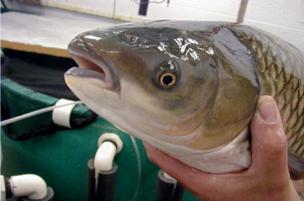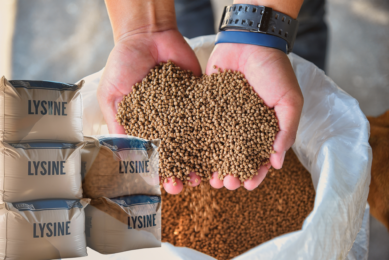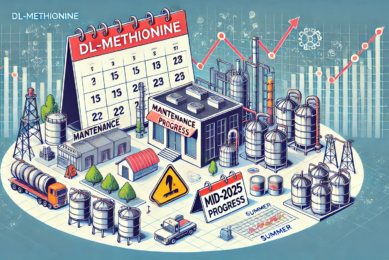Nutritional efficiency in fish fed on formulated feeds

Approximately 50% of total fish consumption is derived from aquaculture. Still much of the feed used for these fish contains fish meal and oil, although this source is very static. So it is important to formulate feeds with other protein sources and value these for use in aquaculture.
Protein is typically the most costly nutrient in a formulated feed. A better understanding of the dietary nutrient requirements of cultured fish species and a continual search for accessible, highly digestible proteins to replace expensive fishmeal is essential. This approach, coupled with applying the ideal protein concept in the formulation of fish feeds, can greatly ameliorate nitrogen pollution arising from fish production systems and increase profitability.
Modern aquaculture diets are complex assemblages of a range of raw materials (formulation) processed to make a feed that satisfies the demands of the animal for nutrients and energy (specifications). In most modern fish diets, the specifications are now often prescribed on a digestible nutrient and energy basis. In the formulation process not only are the diet specifications a critical aspect to the diet, but also the cost of the formulation, its process-ability and also the consideration of the potential for certain raw materials to introduce deleterious biologically active compounds, are all important issues.
Formulating a feed based on an ideal protein is an effective way of using less protein in the diet to meet amino acid requirements. Maximising the effective use of protein and minimising the amount needed in feeds can substantially reduce production costs, increase farm profitability, and reduce harvest of wild fish used for fishmeal. Nitrogen pollution arising from fish production can also be reduced by applying the concept of ideal protein in feed formulation.
Ideal protein composition
The ideal protein can be defined as one that provides the exact balance of amino acids needed for optimum performance and maximum growth. Fish do not have a specific protein requirement but rather a definite requirement for essential amino acids that comprise proteins. When protein is digested, the amino acids comprising it are released and absorbed into the body as individual amino acids or shorter chains of amino acids, the di- and tri-peptides. Feeds which are typically formulated with an excess of protein are usually due to one of two reasons: either the protein is not very digestible so more has to be added to meet amino acid requirements, or excess protein is added because specific essential amino acid requirements are not known.
The excess protein provides a large margin of safety so that there will be less chance that essential amino acids are limiting in the diet. It is not economical or necessary to increase the total protein content of a feed to a point where excessive amounts of many amino acids are included in an attempt to meet the requirement for one or more of the essential amino acids that are shortest in supply.
Valuing protein
Protein Efficiency Ratio (PER) is one of the most popular methods for quantifying the nutritional value of protein. It is an expression which relates the gram of weight gained to the gram of crude protein fed. PER is based on the weight gain of a test subject divided by its intake of a particular food protein during the test period. PER is widely used and the feed industry has been using PER as the standard for evaluating the protein quality of feed. Nutritional value of protein is used as a guide to the effectiveness of protein source in requirements.
Selecting proteins with high digestibility and formulating feeds with the appropriate balance of amino acids can easily accomplish this. The use of nutrient-dense feeds can also decrease costs and minimise nitrogenous waste from aquaculture facilities. A nutrient-dense feed will supply a significant amount of a particular nutrient or nutrients relative to the amount of energy occupying space in a feed pellet. Both of these approaches are being successfully implemented in present formulation with significant improvements in protein efficiency ratios and reductions in nitrogenous waste.
Experiment
We compared the PER of a diet supplied with animal protein derived from earthworms and a diet with soybean protein. Tables 1-3 give some data of the comparisons.
For this experimental diet soybean meal and earthworm were taken as principal ingredients. Other ingredients like milk powder, corn flour, and eggs were added and mixed well. Agar powder was added as binding agent; turmeric and garlic as antibiotics. The said mixture was boiled and cooled at room temperature. After cooling, cod liver oil, vitamin mixture of vitamin B complex and vitamin E were added. It was kept under refrigeration for 12 hours.
After 12 hours it was squeezed over a polythene sheet and dried at room temperature for 48 hours. The dried nodules are crushed into small pellets and the pellets were sun dried to avoid fungal infection, weighted and stored in the bottle.
Following the above procedure all the feeds were formulated in the percentage composition of 25% (soybean meal 25% +groundnut oil cake 75%), 50% (soybean meal 50% + groundnut oil cake 50%), 75% (soybean meal 75% + groundnut oil cake 25%), 100% formulated (totally of soybean meal) and 100% conventional (totally of groundnut oil cake). These feeds were tested on two different experimental fishes such as Labeo rohita (Rohu carp) and Ctenopharyngodon idella (Grass carp).In general, as plant protein supplements are lower in some essential amino acids, energy and minerals such as phosphorous as compared to animal protein supplements, results of PER values were high in earthworm formulated feed, as compared to plant protein sources such as de-oiled ground nut cake and soybean.











